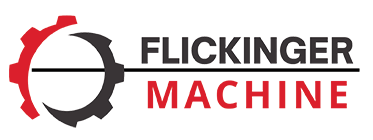Hydraulic Pumps, Tensioners and Torque Wrenches are Essential Bolting System Components
Securing heavy-duty fasteners is heavy-duty work, accomplished with bolting systems that combine pump and force applicator. This force applicator may be a tensioner, which uses tension forces, or a torque wrench, which uses axial forces.
In both cases, bolting is driven by a hydraulic pump, so sourcing the best pump for your operations is essential. And for bolting crews, this means a pump from a reputable manufacturer like SPX.
SPX hydraulic pumps are built for maximum output, and its line of Infinity Stage Pumps (ISPs) emphasize this approach. It’s one of the first continuously variable output hydraulic pumps available, enhancing its performance over a wider range of pressure values.
The ISP line of hydraulic pumps are designed for maximum efficiency within the typical operating range of torque wrenches, splitters, and spreaders. In practice, the ISP line is able to maintain maximum flow rates as pressure climbs, compared to other hydraulic pumps. What does this advantage look like? At 70 Bar, ISP pumps maintain five times as much flow as a standard pump. At 275 Bar, flow rates are twice as high for ISP pumps.
In addition to its superior flow rates, the ISP line offers several features that boost its performance further. Those features include:
- Compatibility with pendant controls
- Oil sight ports for quick fluid inspection
- Retract relief valve, fixed at a 1,500 PSI rating
- Removable 4-inch gauge that can be calibrated
- An adjustable system pressure regulator
Optionally, bolting crews may add a tool manifold and roll cage for their pump. The ISP line is available in air and electric-driven models. SPX’s ISP pumps are rated for more than 100,000 cycles and for continuous duty in temperatures up to 122 degrees Fahrenheit (50 degrees Celsius). The ISP’s proven design makes for faster tool moving, which makes for faster job completion.
Torque Wrenches Apply Axial Force Efficiently and Safely
On the other end of the pump sits a tensioner or torque wrench. Both can handle heavy-duty fasteners and bolts, but torque wrenches work by applying rotational force.
To properly function, torque wrenches are first secured in place. In most cases, this means resting the reaction foot against a nearby fastener or object that will hold the wrench in place during operation. Once secured, hydraulic forces delivered by the pump are delivered to the wrench, which advances the piston inside the cassette and rotates the hex ring around the nut.
Torque wrenches are expected to operate constantly in rough conditions. Given that, there are several features to target in your torque wrenches, including:
- Corrosion-resistant components
- Improve reliability and high-cycle engineering
- Compact nose radius, so the wrench can fit in tighter spaces
- Quick operation and extended stroke for better torque efficiency
- Low weight design for easy handling
- Multi-direction swivel manifold
- Enclosed drive mechanism for additional safety
With these features, your bolting crews can torque fasteners with optimal efficiency and minimal risk.
Tensioners Leverage Tension Forces for More Precise Fastening
Tensioners apply tension forces to secure fasteners in place. During tensioning, the bolt is pulled inside of a puller sleeve that is driven by a piston. Inside the tensioner, springs control this force and maintain it while the nut is rotated on. Once the nut is in place, the tensioner releases the bolt with tension forces applied.
Tensioners designed with spring return provide major productivity and safety advantages over manual return tensioners. SPX’s spring return tensioners drive these advantages home with the following features:
- A piston-over-stroke relief valve that prevents seal blowouts
- A piston-over-stroke indicator line
- Fully enclosed load cell that prevents debris from entering the piston
- Piston misalignment compensation
- A quick release bridge that makes it easy to change adapter kits
There are also wind tensioners, designed for wind turbine bolts, and subsea tensioners for handling underwater flanges.
Bolting Support Tools Include Nut Splitters, Spreaders and Flange Spreaders
While hydraulic pumps, torque wrenches and tensioners are the primary components of bolting systems, there are additional tools and accessories that can speed bolting operations up. They include:
- Nut splitters – Nut splitters are used to cut away nuts that cannot be loosened through conventional forces. They work by attaching to the corroded or frozen nut, and then push a blade through it to cut it free. Ideal for removing damaged flange fasteners.
- Flange spreaders – Flange spreaders look like a tiny pair of metal jaws. When hydraulically powered, the spreader’s jaws open and push the flange faces apart. Flange spreaders can be used even when there is minimal (even zero) space between faces.
- Flange pullers – Flange pullers bring flange faces together so fasteners can be secured. During operation, the puller bar is threaded through both flanges and secured. Once in place, hydraulic cylinders provide the pulling power, bringing together both faces for bolting.
Torque wrench sockets, hydraulic nuts, torque multipliers, backup wrenches and reaction arms are also important for supporting your bolting operations.
Flickinger Machine Can Provide Your Team with a Full Complement of Bolting Products
Industrial bolting, the kind used with oil and gas flanges, requires the reliable application of extreme forces. It’s a heavy-duty job, and one that requires proven equipment to do effectively.
Flickinger Machine can source this equipment, whether it’s a hydraulic pump, torque wrench or tensioner. We can also provide ongoing support for your bolting products, ensuring they remain productive for years.
